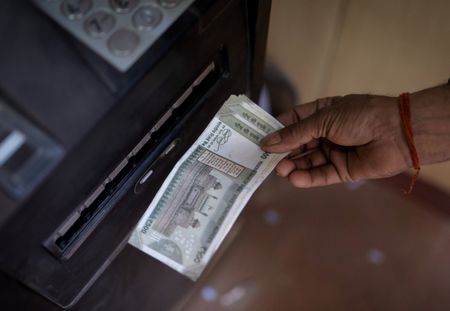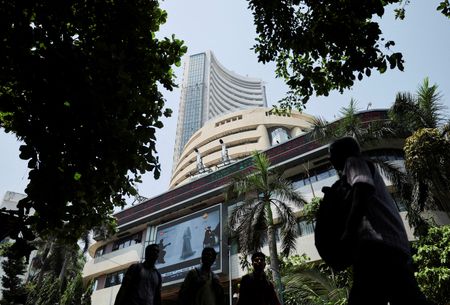By Jaspreet Kalra
MUMBAI (Reuters) -The Indian rupee closed marginally lower on Thursday as outflows and dollar demand spurred by persistent hedging from importers eclipsed the positive impulse from a broadly weaker dollar.
The rupee closed at 88.6650 against the U.S. dollar, down slightly from its close at 88.63 in the previous session.
Portfolio outflows from local stocks and persistent dollar demand from local companies have become sore points for the South Asian currency, increasing its reliance on central bank interventions to hold above its all-time low of 88.80 per dollar.
On Thursday too, state-run banks were spotted offering dollars which helped the rupee hold its ground. The dollar sales were “intermittent and measured,” a trader at a private bank said.
“The line on the sand appears to have (been) drawn at 88.80, ahead of 89.00 and psychologically key level of 90.00. Intervention presence has been relatively aggressive at the spot as well as forwards/NDF space,” DBS said in a note.
Foreign investors have net sold over $850 million of Indian stocks in November so far. Foreign portfolio investors’ ownership in companies listed on India’s National Stock Exchange has declined to just under 17%, the lowest in over 15 years, per a note from the exchange on Thursday.
Meanwhile, the dollar index fell 0.2% to 99.1, its lowest level in nearly two weeks, after U.S. President Donald Trump approved a deal to reopen the U.S. government, removing a major source of uncertainty.
Asian currencies were up between 0.2% to 0.4% while global equities advanced as well. India’s benchmark equity indexes, the BSE Sensex and Nifty 50 ended flat on the day.
Later in the day the focus will be on remarks from U.S. Federal Reserve policymakers for cues on the trajectory of the central bank’s benchmark interest rates.
(Reporting by Jaspreet Kalra; Editing by Ronojoy Mazumdar)










